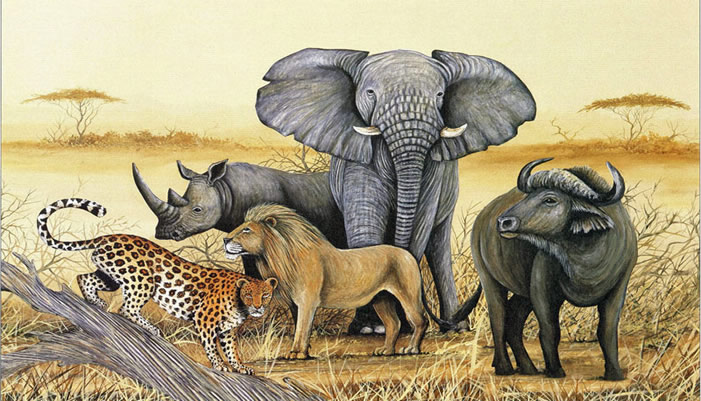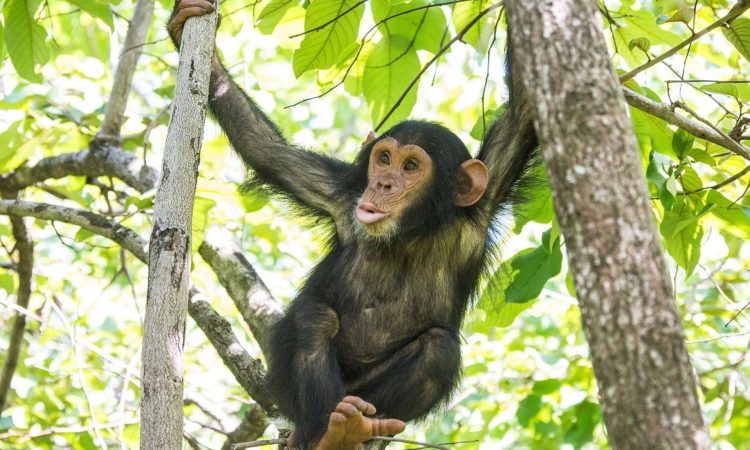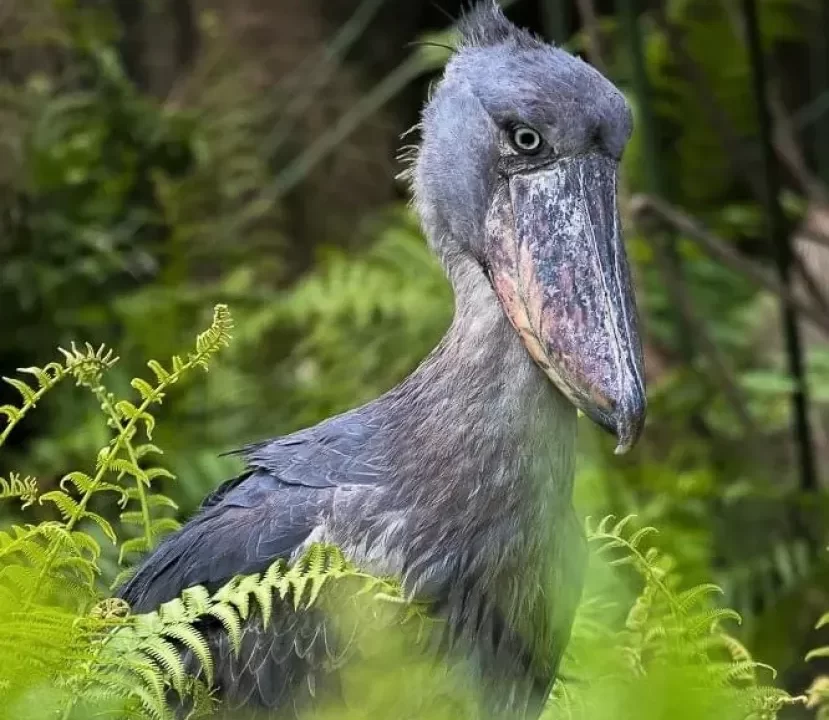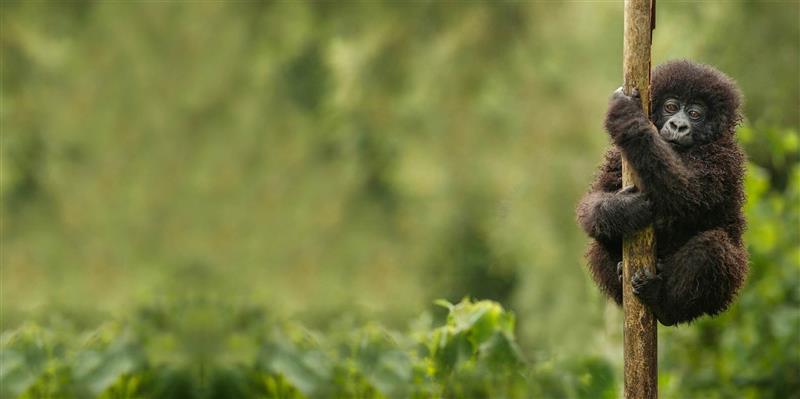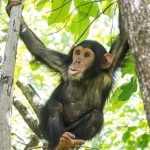
Chimpanzee Trekking in Uganda
October 18, 2025Uganda, often celebrated as the “Pearl of Africa,” is a land of breathtaking beauty and diverse ecosystems. From lush rainforests and sweeping savannahs to shimmering lakes and rolling hills, the country is home to some of Africa’s most spectacular wildlife — including the legendary Big Five: lion, leopard, elephant, buffalo, and rhinoceros.
Once considered the five most dangerous animals to hunt on foot, these magnificent creatures are now the stars of Uganda’s thriving wildlife tourism. Seeing the Big Five in their natural habitats is an unforgettable highlight of any safari. Below is a complete guide to the Big Five in Uganda and where you can spot them.
1. Lions – The Kings of the Savannah
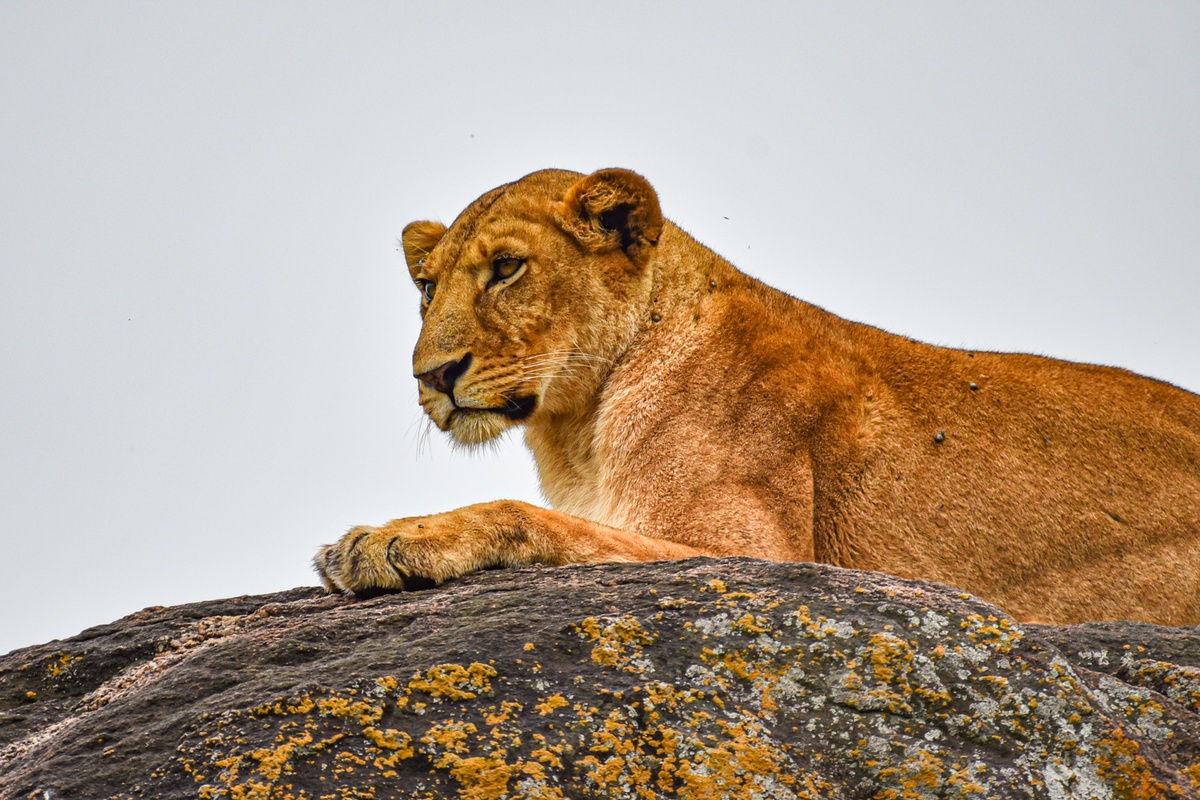
Lion | Uganda’s Big five animals
Lions are the ultimate symbol of strength, pride, and power. Uganda offers some of the best lion-viewing opportunities in East Africa, particularly because of its unique tree-climbing lions — a rare behavior found in only two places in the world.
Where to See Lions in Uganda | Uganda’s Big five animals
Queen Elizabeth National Park (Ishasha Sector):
This southern sector of the park is world-famous for its tree-climbing lions. It’s a surreal sight — lions draped lazily across the branches of giant fig and acacia trees, avoiding ground heat and insects. Ishasha is one of the few places on Earth where this behavior is regularly observed, making it a must-visit for wildlife photographers and enthusiasts.
Murchison Falls National Park:
The northern savannah plains of Murchison are excellent for spotting lions on early morning or evening game drives. You’ll often see them stalking Uganda kob (antelope) or resting in the shade after a successful hunt.
Kidepo Valley National Park:
Remote and wild, Kidepo offers some of the most authentic lion encounters in Africa. Large prides roam freely across its open plains, often near Narus Valley, where prey is abundant.
Insider Tip:
Go for a sunrise or sunset drive — lions are most active during the cool hours, and the golden light makes for stunning photographs.
2. Leopards – The Silent and Elusive Hunters
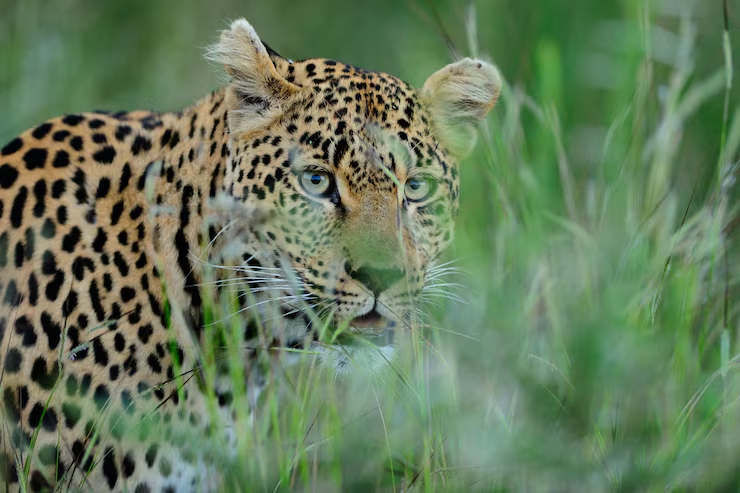
leopard | Uganda’s Big five animals
Leopards are the most secretive of the Big Five. With their striking rosette-patterned coats and stealthy behavior, they are masters of camouflage and ambush. Though elusive, Uganda’s diverse habitats provide excellent chances of spotting these solitary cats.
Where to See Leopards in Uganda | Uganda’s Big five animals
Queen Elizabeth National Park:
The Mweya Peninsula and Ishasha sectors are known for leopard sightings, especially in the early morning or late afternoon. They are often seen resting in trees or slinking through the tall grass in search of prey.
Kidepo Valley National Park:
In Kidepo, leopards thrive in rocky outcrops and woodland areas. Because of the park’s low visitor numbers, encounters here are intimate and unhurried.
Lake Mburo National Park:
Leopards are surprisingly common here and are sometimes spotted even near lodges. The park’s small size increases your odds of seeing one.
Pro Tip:
Leopards are nocturnal — night game drives in parks where permitted (like Lake Mburo) offer a great opportunity to see them on the move.
3. Elephants – The Gentle Giants of the Wild
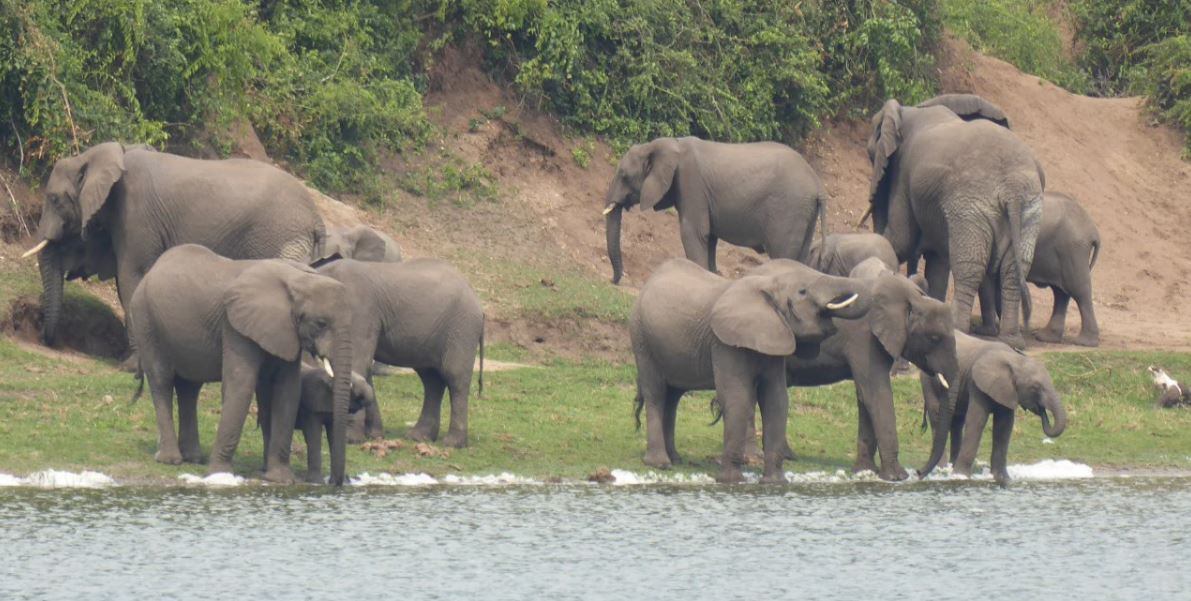
Elephant | Uganda’s Big five animals
African elephants are the largest land animals on Earth and a true highlight of any Ugandan safari. They are highly intelligent, social, and emotional beings that live in close-knit family groups led by matriarchs.
Where to See Elephants in Uganda
Queen Elizabeth National Park:
Home to one of Uganda’s largest elephant populations, this park offers sightings almost everywhere — from the open Kasenyi Plains to the shores of the Kazinga Channel, where elephants often come to drink and bathe.
Murchison Falls National Park:
The northern banks of the Nile River are a hotspot for elephant sightings. Watching these gentle giants wander against the backdrop of the thundering Murchison Falls is an unforgettable experience.
Kidepo Valley National Park:
This park’s remote wilderness provides encounters with smaller, more elusive elephant herds, often seen roaming the valleys or drinking at the Narus River.
Did You Know?
Elephants play a crucial role in maintaining Uganda’s ecosystems by creating water holes, dispersing seeds, and clearing vegetation that allows other species to thrive.
4. African Buffalo – The Strong and Unpredictable Grazers
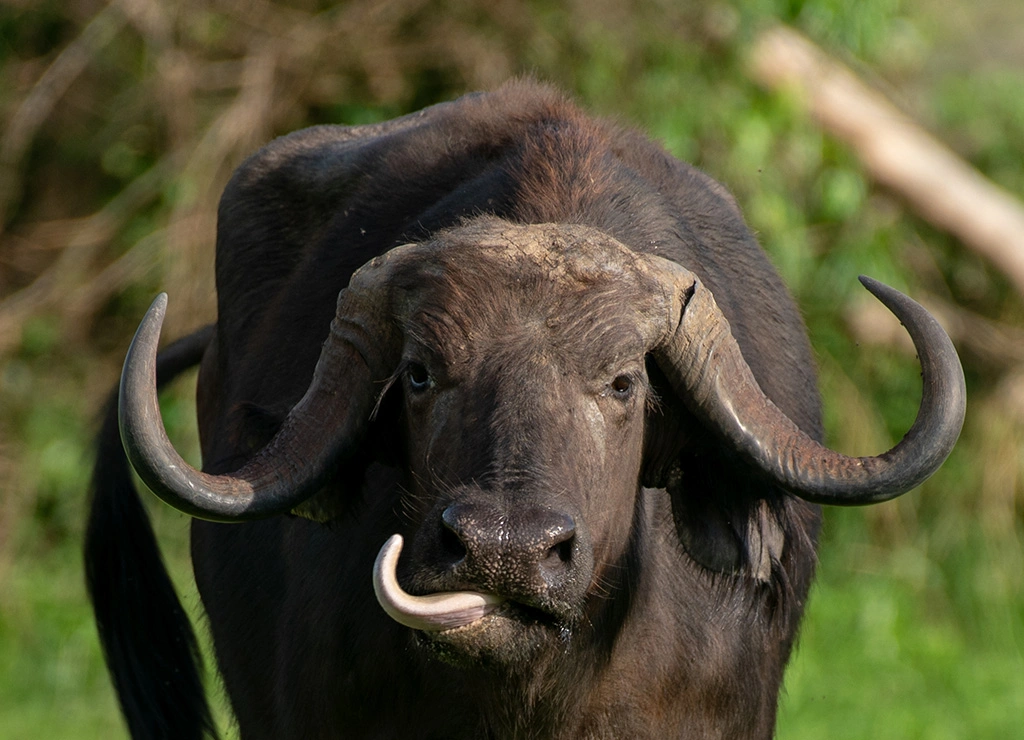
buffalo | Uganda’s Big five animals
The African buffalo, or Cape buffalo, is one of Africa’s most formidable animals — powerful, unpredictable, and highly social. They move in large herds that can number in the hundreds, making for dramatic safari scenes.
Where to See Buffaloes in Uganda | Uganda’s Big five animals
Queen Elizabeth National Park:
Buffalo herds are common throughout the park, especially along the Kazinga Channel, where they often mingle with hippos and elephants. The sight of hundreds of buffaloes grazing or wallowing in mud pools is iconic.
Murchison Falls National Park:
The park’s open plains and riverine areas are prime buffalo territory. You’ll often spot them grazing alongside Uganda kobs, waterbucks, and hartebeests.
Kidepo Valley National Park:
In the wild north, massive herds roam freely across the Narus Valley. These buffaloes are particularly photogenic against the park’s dramatic mountain backdrop.
Fun Fact:
Buffaloes are known for their strong herd bonds and defensive behavior — when threatened, they form a circle around the young, horns facing outward, to fend off predators.
5. Rhinoceroses – Uganda’s Conservation Success Story
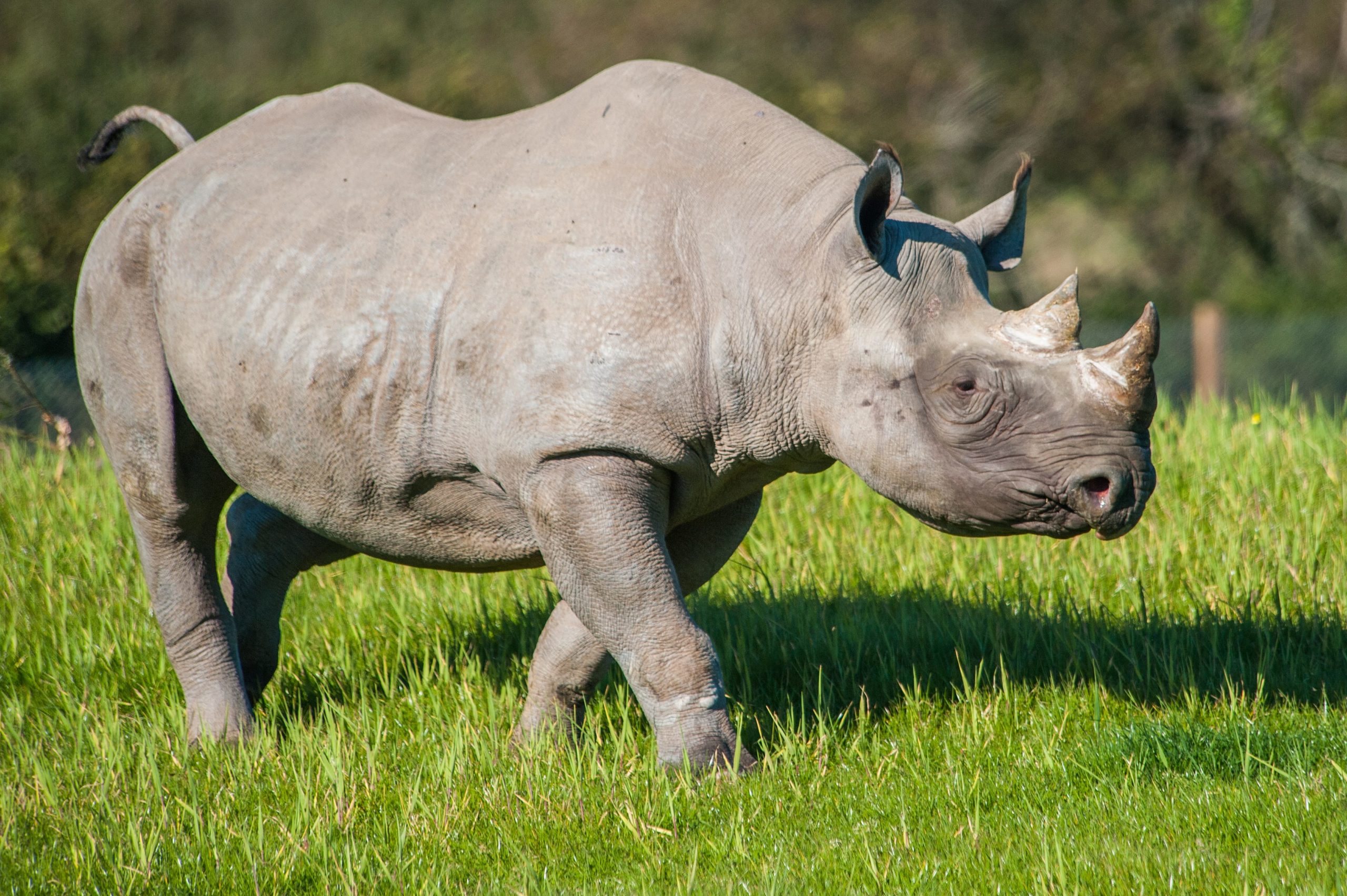
Rhinoceroses | Uganda’s Big five animals
Rhinos were once widespread across Uganda but were wiped out by poaching in the 1980s. Thankfully, thanks to dedicated conservation efforts, they are making a remarkable comeback.
Where to See Rhinos in Uganda | Uganda’s Big five animals
Ziwa Rhino Sanctuary (Nakasongola District):
Located along the route between Kampala and Murchison Falls, Ziwa Rhino Sanctuary is the only place in Uganda where you can see wild rhinos. The sanctuary is home to both black and white rhinos, reintroduced through a successful breeding program.
Visitors can go on guided walking safaris, getting surprisingly close to these massive yet gentle animals in complete safety. The experience is peaceful, educational, and deeply moving — a testament to Uganda’s commitment to wildlife restoration.
Conservation Note:
Ziwa’s goal is to reintroduce rhinos into Uganda’s national parks, once conditions are secure. By visiting, you directly contribute to this mission and the future of rhino conservation.
Planning Your Big Five Safari in Uganda
1. Combine Multiple Parks:
To see all five, plan an itinerary that includes Ziwa Rhino Sanctuary, Murchison Falls, and Queen Elizabeth National Park. Add Kidepo Valley for untouched wilderness and diverse landscapes.
2. Choose Guided Safaris:
Expert guides enhance your experience with wildlife insights, tracking skills, and safety knowledge. They know the best times and locations for sightings.
3. Pack Smart:
Bring binoculars, a good zoom camera, light clothing, a wide-brimmed hat, sunscreen, insect repellent, and sturdy shoes. Early morning and evening drives are best for spotting active wildlife.
4. Support Responsible Tourism:
opt for eco-friendly lodges and local tour operators that prioritize conservation and community involvement.
Conclusion: Uganda’s Big Five – A Safari Like No Other
Seeing the Big Five in Uganda is more than just ticking names off a list — it’s a journey into the heart of Africa’s wild beauty. From the tree-climbing lions of Ishasha to the reintroduced rhinos at Ziwa Sanctuary, each encounter tells a story of survival, adaptation, and conservation.
Uganda’s unique combination of savannah, forest, and river ecosystems ensures that every game drive feels different, every sighting magical. Whether you’re a first-time visitor or a seasoned traveler, a Big Five safari in Uganda promises unforgettable moments, breathtaking photography, and a deep appreciation for nature’s greatest treasures.

